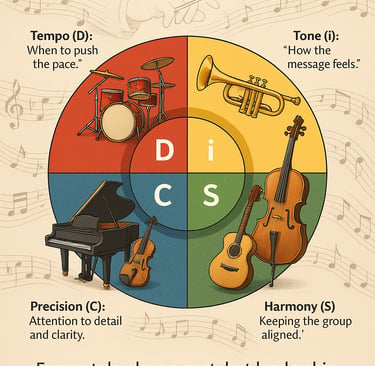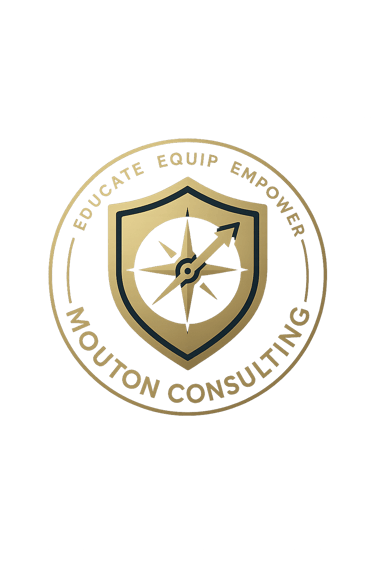Leadership is like Music
Leadership, like music, depends on tempo, tone, and timing. In this post, Dr. Marion Mouton explores how leaders can orchestrate culture by knowing when to accelerate, how to harmonize competing interests, and why dissonance sometimes drives stronger results. Drawing from campus leadership and tools like the DiSC assessment, this article connects the art of music to the craft of leadership showing how to educate, empower, and equip teams with clarity and consistency.
8/17/20253 min read


As a campus leader, I’ve learned that leadership feels less like conducting a meeting and more like conducting an orchestra. Some days call for a marching tempo, others require a softer tone, and every decision depends on the right timing. One tool that has sharpened my ability to do this is the DiSC behavioral assessment. It helps me understand not only my own natural rhythm as a leader but also the pace, tone, and timing that resonate best with my team. At Leonard Middle School, we have seen firsthand how adjusting our leadership “sound” based on people’s DiSC styles can turn individual efforts into a unified performance.
According to Harvard Business Review, leaders who adapt their communication style to match their team’s needs increase engagement by up to 30%. Tools like DiSC help leaders identify those needs and fine-tune their approach.
Leadership is like music. It is a dynamic process of setting the tempo, aligning the tone, and mastering the timing.
Tempo is about pacing. My Conscientious (C) style on the DiSC profile naturally pushes me toward structure, precision, and thoroughness. That’s great for accuracy but can sometimes slow decision-making. By understanding my style and the faster-paced, action-oriented needs of my D or i team members I can adjust the tempo so everyone stays engaged. For example, when rolling out a new instructional framework, I planned quick wins for high-energy staff while allowing more time for detail-driven colleagues to process and prepare.
Tone speaks to how leadership feels. Clarity and consistency in communication are non-negotiable, but so is empathy. DiSC reminds me that my tone should connect with people’s motivational drivers. A high S team member may need reassurance and stability, while a high i thrives on enthusiasm and recognition. When we launched our campus-wide behavior expectations, we matched our tone to different styles so each staff member felt both heard and motivated.
Timing is where wisdom comes in. Sometimes you have to sit in silence before acting. Other times, you strike while the moment is hot. DiSC helps here, too. For example, decisive D styles want immediate action, while C styles prefer full data before moving forward. We balance these needs by gathering enough information for thorough analysis but acting quickly enough to maintain trust and momentum.
When you educate your team, you give them the score. When you empower them, you hand over the baton. When you equip them, you provide the instruments to play. Tools like DiSC help ensure that you are not only leading the orchestra but also speaking the right musical language for each section, keeping everyone in rhythm even when the music gets complex.
Sometimes, like in jazz, the discord is deliberate. A disagreement or challenge can become a creative tension that births innovation. In those moments, the leader’s role is not to silence dissonance but to guide it into something purposeful.
Final Thought
Leadership isn’t noise. It’s music. When intentional and aligned, it inspires, transforms, and uplifts. Using tools like DiSC helps you not just conduct the music but connect with every musician in the room.
"Music is the space between the notes. So is leadership." — Claude Debussy
Call to Action
This week, pay attention to your leadership tempo, tone, and timing. Use your DiSC insights or take the assessment if you haven’t to identify where small adjustments could create better harmony on your team.
Three Reflective Leadership Questions
How does my DiSC style influence my natural leadership tempo?
In what ways am I adjusting my tone to connect with different DiSC styles on my team?
Am I timing my decisions to align with both the urgency of the situation and the needs of the people involved?
Journaling Prompt
Think about a recent leadership decision.
What was the tempo of that moment, and how did your DiSC style influence it?
How did you adjust your tone to meet the needs of different team members?
Looking back, was your timing effective for all DiSC styles represented or could it have been better balanced?
